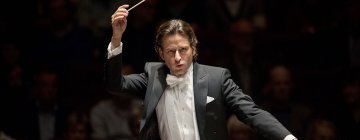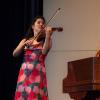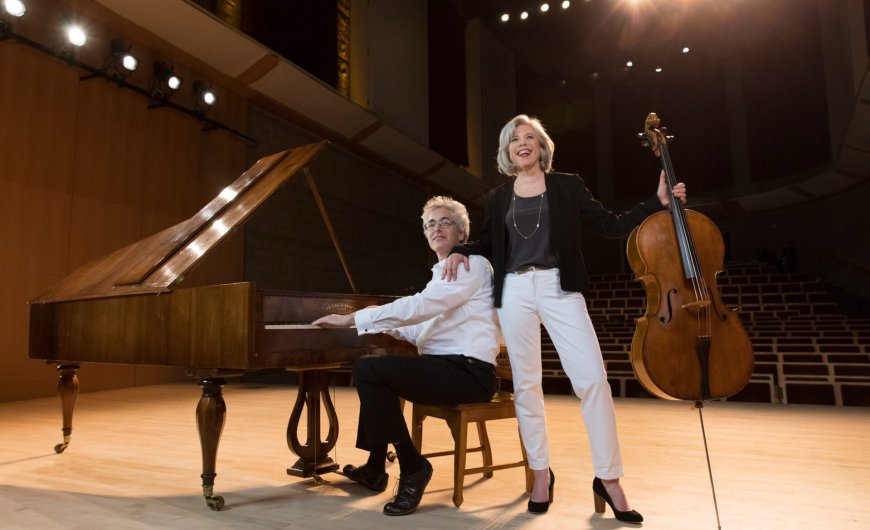
Cellist Tanya Tomkins and pianist Eric Zivian are passionate about historically informed performance but also undogmatic. At the Valley of the Moon Music Festival (VMMF), which they founded a decade ago in Sonoma — and which this summer runs July 12–27 — the emphasis is on discovery and a California style of openness to possibilities.
Perhaps it’s that attitude that has allowed the festival to expand and thrive, not just beyond the usual 17th- and 18th-century period repertory but also as an organization. There are 32 artists participating this season, including five apprentices, plus Harvard University musicologist Kate van Orden, who will give the preconcert lectures.
“We had so many applicants to our fellowship program this year,” said Tomkins, noting that many of them were new to historical performance practice. “They were all these phenomenal players coming out of Juilliard who have no experience with gut strings. So suddenly there’s this wave of the next generation that is just dying to do this.”
Tomkins has a theory why, and it involves a younger colleague she and Zivian are close with. “Audrey Vardanega got very interested in fortepiano [early piano] during the pandemic. We became a pod, and Eric basically taught her, and she and I have been playing Beethoven on historical instruments. So all of her friends in New York started talking to each other.”
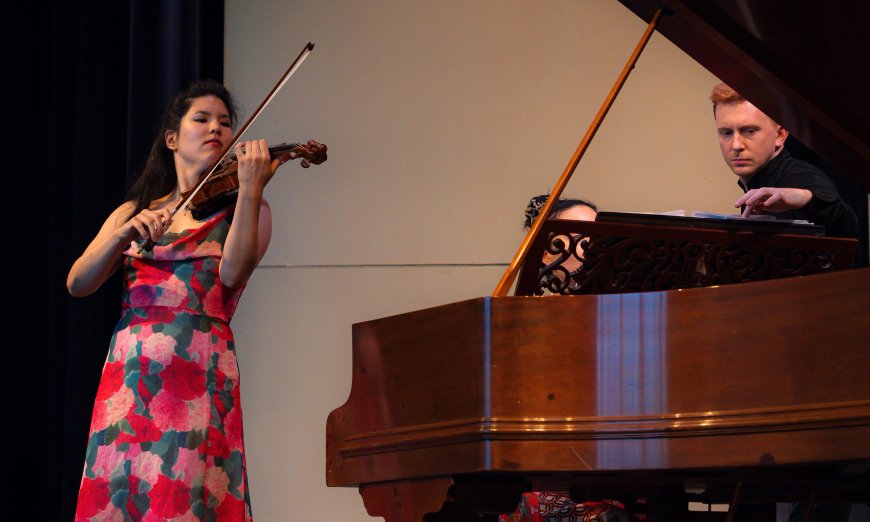
The cellist added that another VMMF regular, violinist Rachell Ellen Wong, “tells everybody she knows about the festival, too.”
Across many summers now, Tomkins and Zivian have been extending the period approach into the 19th century, but more and more, their interests are not so easily contained. This year’s festival, organized around the theme of “Liaisons” and exploring the artistic and personal connections that influence music history, contains a huge swath of styles and works.
A concert on July 19 centers on Nadia Boulanger, without question the most influential composition teacher of the 20th century, and covers the years 1887 to 1982. The program includes music by some of her students — Aaron Copland, Jean Françaix, Quincy Jones, and Astor Piazzolla — as well as her sister Lili and her teacher Gabriel Fauré.
Do gut strings really belong in Piazzolla’s Oblivion (1982) or Jones’s Soul Bossa Nova (1962)? That question clearly takes a back seat to the opportunity to spotlight Boulanger’s legacy and dive into a melange of works by seemingly unrelated composers.
“It’s a little boring just to stay with [music from] Mozart to Brahms,” Tomkins said.
Zivian agreed, enthusing about Lili Boulanger’s song cycle Clairières dans le ciel (1914), written when she was only 20. “I didn’t know it before I put it on the program,” he said, “and it’s one of the best things I’ve ever played.”
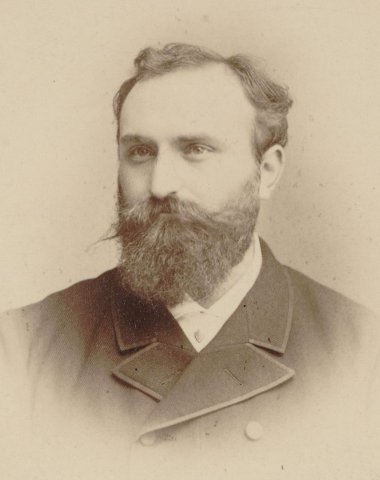
Then there’s the case of Ernest Chausson’s brilliant but odd Concert in D Major for Violin, Piano, and String Quartet (1891), which Tomkins and Zivian had been looking for an opportunity to perform. So they conceived a concert for July 13 featuring French music of the late 19th and early 20th centuries, zeroing in on these composers’ conflicted relationship with the influence of Richard Wagner in the wake of the Franco-Prussian War.
As for their general artistic outlook, Tomkins and Zivian, musical and life partners, explained that stripping away the current “international sound” that conservatories have inculcated in many instrumentalists allows for fresh approaches that better fit the music. Zivian, like other historically informed pianists, has learned to allow his hands to be independent on downbeats, creating a different sense of flow that was common at the end of the Romantic era.
But a lot of what the cellist and pianist do comes from just figuring out what the music demands.
“It’s liberating,” said Tomkins. “For instance, with string quartet playing [today], the whole priority is to be absolutely together all the time and absolutely stacked up. And to release that opens up possibilities.”
Zivian elaborated, describing how “the modern string quartet has this agenda that everyone should sound the same. And that’s great sometimes, but sometimes everybody should play differently from each other.”
“We are not musicologists ourselves,” Tomkins said. “We are performers. We come to these historical instruments and experiment with what works and learn from other musicians. We’re pretty intuitive in that way. We aren’t prescriptive. We’re just letting it seep into our systems and letting other people teach us, too.”
